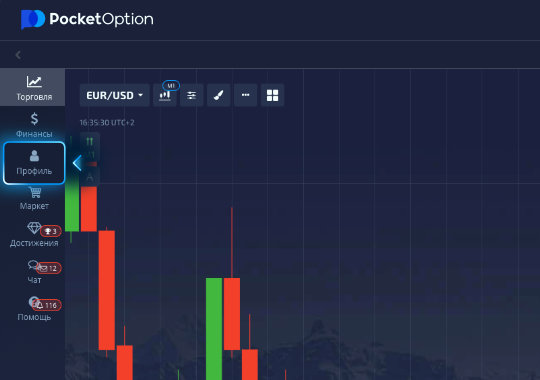
Pocket Option RSI Strategy: A Comprehensive Guide
In the world of online trading, the right strategies can make a significant difference in your success. One effective method that traders have utilized is the Pocket Option RSI Strategy, which leverages the Relative Strength Index (RSI) to make informed trading decisions. This article will explore how you can maximize your trading potential using the RSI, providing insights into how the RSI works, its benefits, and practical tips for implementation. For a more detailed strategy, you can check out the Pocket Option RSI Strategy Pocket Option Стратегия RSI.
Understanding the Relative Strength Index (RSI)
The Relative Strength Index (RSI) is a popular momentum oscillator that measures the speed and change of price movements. Developed by J. Welles Wilder, the RSI ranges from 0 to 100 and is typically used to identify overbought or oversold conditions in a market. A reading above 70 usually indicates that an asset is overbought, while a reading below 30 suggests that it is oversold. Understanding this indicator is crucial for traders looking to time their entries and exits effectively.
Why Use the RSI in Pocket Option Trading?
Implementing the RSI in your trading strategy offers several advantages. Firstly, it helps in mitigating risk. By identifying overbought and oversold levels, traders can avoid taking unnecessary risks when the market might be reversing. Secondly, the RSI can help you identify potential entry and exit points. With this information, traders can make more informed decisions, ultimately increasing their chances of profitability on platforms like Pocket Option.
Setting Up the RSI on Pocket Option
Setting up the RSI on the Pocket Option trading platform is simple. Follow these steps:
- Log into your Pocket Option account.
- Select the asset you want to trade.
- Open the chart for that asset.
- Click on the “Indicators” menu.
- Find the “Relative Strength Index” and add it to your chart.
Once the RSI indicator is applied, you will see a line oscillating between the values of 0 and 100, along with horizontal lines representing the 30 and 70 levels. This setup will help you visually interpret the market conditions.
How to Use the RSI for Trading Decisions

Using the RSI effectively requires understanding the context of the market conditions. Here are some common strategies associated with the RSI:
1. Identifying Overbought and Oversold Conditions
As mentioned earlier, an RSI above 70 signals overbought conditions, while a reading below 30 indicates oversold conditions. Traders typically consider selling when the RSI crosses above 70 and buying when it drops below 30. However, it’s essential to confirm these signals with additional analysis, such as candlestick patterns or other indicators.
2. Divergence Trading
Divergence occurs when the price of an asset moves in the opposite direction of the RSI. For example, if the price is making higher highs while the RSI is making lower highs, this could indicate a potential reversal. Traders should combine this signal with other analysis methods to confirm a trade.
3. RSI Trendlines
Trendlines can enhance the effectiveness of the RSI. By drawing trendlines on the RSI itself, traders can identify support and resistance levels. A break of these trendlines, in conjunction with price action, can trigger trading opportunities.
Risk Management Strategies
While the RSI provides valuable information, it’s crucial to implement risk management strategies to protect your capital. Here are some important tips:
- Set Stop-Loss Orders: Always have a stop-loss in place to limit potential losses.
- Use Proper Position Sizing: Determine the amount to risk on each trade based on your overall capital.
- Diversify Your Investments: Avoid concentrating all your funds on one asset to reduce risk.

Combining RSI with Other Indicators
To enhance the effectiveness of the Pocket Option RSI Strategy, consider combining it with other technical indicators. The following indicators work well with the RSI:
1. Moving Averages
Using moving averages alongside the RSI can help confirm trends. For instance, if the RSI indicates overbought conditions and the price is above the moving average, it could provide a stronger sell signal.
2. Stochastic Oscillator
This is another momentum indicator that can complement the RSI. When both indicators show overbought or oversold conditions, it increases the reliability of trading signals.
Backtesting and Practice
Before implementing the Pocket Option RSI Strategy with real money, backtest it on historical data to see how it would have performed. Many trading platforms offer demo accounts where you can practice without risking actual funds. This is an excellent way to refine your skills and develop a trading plan that works for you.
Conclusion
The Pocket Option RSI Strategy can empower traders with the information needed to make profitable decisions. By mastering the RSI and incorporating risk management strategies, you can enhance your trading experience on platforms like Pocket Option. Remember, continuous learning and practice are vital for long-term success in the trading world.
Always stay updated with market conditions and adapt your strategies accordingly. Happy trading!
